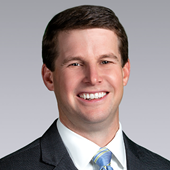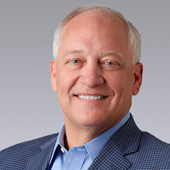Traditionally, healthcare facilities have been stand-alone buildings, often located away from bustling city centers or mixed-use developments. However, patients today value convenience and accessibility as much as the quality of care. As expectations evolve and the lines between medical care, wellness, and lifestyle blur, mixed-use medical facilities are emerging as a key component in the future of healthcare real estate.
These developments seamlessly blend healthcare services with retail, residential, and recreational spaces, creating vibrant, multi-functional communities that cater to modern living.
The Appeal of Mixed-Use for Medical Tenants
The rise of mixed-use medical facilities is driven by several factors, including an aging population that requires accessible healthcare, changing patient expectations for convenience and integration, and the increasing consumerization of healthcare with retail-like service models. Additionally, space constraints in urban areas make mixed-use developments a strategic solution for incorporating medical services into high-density environments.
Medical tenants are increasingly drawn to mixed-use developments for several reasons:
- Foot Traffic and Visibility: Sharing space with retail and residential units increases exposure to potential patients.
- Amenity Integration: Onsite dining, fitness centers, and other amenities enhance the patient and staff experience.
- Shared Infrastructure: Developers often provide shared parking, utilities, and maintenance, reducing operational costs for tenants.
- Community Benefits: These developments attract businesses, create jobs, and contribute to a more walkable, well-planned urban environment.
One standout example of a successful mixed-use development with a healthcare component is GreenGate, a high-end mixed-use space in Richmond, Virginia. GreenGate combines luxury living, retail, and dining with medical offices, creating a vibrant community hub.
Getting the Tenant Mix Right
A successful mixed-use medical facility relies on a well-balanced tenant mix. The goal is to create a complementary ecosystem where medical tenants, retailers, and service providers enhance each other’s offerings. Key considerations include:
- Complementary Businesses: Pharmacies, wellness clinics, and fitness centers naturally align with medical tenants, creating synergy.
- Retail & Dining Options: Cafes, healthy eateries, and convenience stores cater to both patients and healthcare staff.
- Specialty Practices: A mix of primary care, specialists, and outpatient services ensures a one-stop healthcare destination.
- Workforce Considerations: Office spaces, co-working areas, and residential units support professionals working in the medical and retail industries within the development.
Reynolds Crossing is another mixed-use development that exemplifies a well-balanced and thoughtfully curated tenant mix. The center offers diverse dining options, including Chipotle and Mezeh Mediterranean Grill, alongside wellness destinations such as yoga studios and Orangetheory Fitness. Additionally, it meets a range of healthcare needs with services like physical therapy, dermatology and dental care, creating a lively and convenient hub for visitors.
Challenges and Opportunities
While the benefits are clear, developing mixed-use medical facilities comes with challenges. Zoning regulations, high construction costs, and the need to balance diverse tenant needs can complicate the process. Other key considerations include sufficient parking, clear wayfinding for patients, and thoughtful traffic flow. Managing patient interactions—such as patient visits overlapping with office tenants—and minimizing potential disruptions from nearby retail activity are also critical factors.
However, these challenges present opportunities for creative solutions. Partnerships between developers, healthcare providers, and municipalities are key to overcoming these hurdles and delivering projects that meet the needs of all stakeholders.
As the healthcare industry continues to adapt to changing patient needs and technological advancements, the role of real estate will become even more critical. Mixed-use medical developments are uniquely positioned to drive this evolution, offering a blueprint for the future of healthcare delivery.

 Malcolm Randolph Jr.
Malcolm Randolph Jr.

 Brian Bruggeman
Brian Bruggeman
 Shawn Janus
Shawn Janus